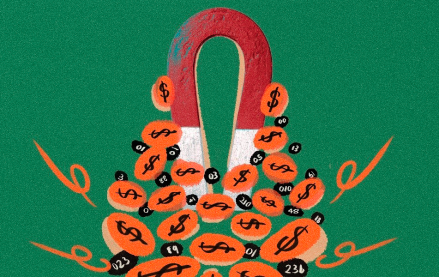
By Christian Printzell Halvorsen, CEO, Cxense
Top publishers experimenting with their paywall approaches are making headlines. In February, after six months of testing, the Economist tightened its metered paywall to five free articles per month. New York Media is trying a more flexible approach, testing and learning which content drives subscriptions, particularly among their most loyal readers, who they call “obsessives.” Even Digiday is pivoting to paid and has introduced a metered paywall.
However publishers feel about subscriptions, you’ll bet someone in the house is keeping a close eye on ad impressions. It wasn’t so long ago that publishers were promising massive scale, and that was just fine with CPM-driven ad buyers. It may seem counterintuitive, but subscription models can, in fact, raise ad revenues over the long term — but only if publishing teams are using data and agile tools to strike the right balance between the two revenue streams.
Here are four ways to build a subscription business that bolsters ad revenue.
Subscription doesn’t mean ad-free — it means better ads
While streaming services like Netflix and Spotify offer ad-free subscriptions, users don’t expect the same quid pro quo from digital publishers. What they expect is premium content, member exclusives and better-curated ads. Publishers who collect, organize and analyze subscriber data in a DMP can use that data to deliver more relevant ads sitewide. Even non-subscribers benefit when publishers use all the data they have to improve lookalike targeting and find readers actually interested in what’s being offered. More importantly, they’re able to qualify readers for campaigns with specific business goals.
Nordjyske Medier in Denmark strategically deploys its advertising to increase quality and effectiveness for advertisers and command higher prices for campaigns. “We can get pretty close to who is interested in, say, a car, their potential buying intent and also which car or class of car they are interested in,” said their online marketing manager Jesper Johansen. The tactic has increased click-through rates by 300 percent on average — while digital subscriptions grew by 50 percent in the same period.
Ad position: web_incontent_pos1
Figure out what converts and let your top content do the heavy lifting
A subscription team’s first order of business is often determining which kind of content drives subscriptions — and which doesn’t. Nicholas Thompson, editor-in-chief at Wired, put it this way: “When your business depends on subscriptions, your economic success depends on publishing stuff your readers love — not just stuff they click. It’s good to align one’s economic and editorial imperatives.”
The team at Nordjyske Medier, for example, realized it had many soccer fans among its readers that were likely to subscribe in order to keep up with their team. Once those determinations are made, the subscription team can weight that content appropriately within the paywall algorithm.
Publishers have mostly determined that platform distribution is a losing tactic, jeopardizing brand awareness and giving too much power to outside algorithms that drive one-time pageviews and don’t nurture reader loyalty. On the other hand, they do drive scale. The Wall Street Journal’s deal with Apple News+ may point the way toward a balance here, as the publication will reserve its premium content for on-site readers. If others model their own approach on the Journal, they may be able to reap the moderate revenue offered by platform scale while using top-performing content to grow their own base of subscribers.
Ad position: web_incontent_pos2
Establish cross-departmental goals
Traditionally, ad revenue, subscription tactics and content development are handled by different departments, each with their own goals and managers. When a paywall is tightened, it might result in cheers from the subscription side and groans from the ad side. When it’s eased, the ad side sighs in relief while the subscription team worries about losing their momentum.
At the end of the day however, every department is striving toward the same goal: profitability for the whole organization. Since the vast majority of readers won’t subscribe, ad revenue should remain a priority for everyone.
Data sharing and tools that remove bottlenecks can help get everyone on the same page and working toward the same benchmarks. Every department should have access to dashboards that report quality, real-time data on subscription and ad performance. Department heads should review that data at cross-functional meetings so all team members know what content and reader behavior is driving subscriptions, which ad campaigns need fulfillment and what upcoming content can help the team meet its goal. Likewise, by working together teams can use data in creative ways to over-deliver on campaigns.
Put the power back in editors’ hands
Editors and reporters are now taking part in every aspect of content management, from posting stories to picking the art, as well as writing headlines and circulating them on social media. It only follows that they should have a hand in lifting and tightening the paywall when news breaks.
In a recent webinar, The Wall Street Journal said that when news breaks, it can lift its paywall in minutes if it is in the interest of informing the public. Conversely, if the ad department launches a major campaign that requires impressions, the editorial department will know first which high-traffic articles can fulfill fastest. That’s something the newsroom should have the freedom and capability to do. Thanks to user-friendly technologies, those adjustments can be made by marketers and editors directly and no longer need to sit in the IT project queue.
Publishers who deploy paywalls aren’t choosing one revenue stream over another. Subscribers — apart from providing that universally sought after predictable revenue stream — contribute important first-party data that can improve ad delivery and effectiveness. When managed correctly, that data can be used to qualify readers, create bespoke segments and serve impressions selectively. By building the right infrastructure, sharing data and embracing agility, publishers can recruit subscribers and boost revenue simultaneously.
More from Digiday
Sliders test article
Amazon bulldozes into new markets, upending the status quo and challenging rivals. Today, it’s the turn of the ad-supported streaming world, and Amazon is coming out of the gate strong. Why, you ask? Because Amazon is serving marketers an opportunity beginning today to reach a whopping 115 million monthly viewers in the U.S. alone, courtesy […]

How CTV and DOOH are growing this political season for smaller agencies
Connected TV and digital out-of-home are playing a bigger role in upcoming elections and politics – especially for smaller agencies looking to place clients’ dollars.

CMO Strategies: Advertisers identify the top attributes on ad-supported streaming platforms
This is the third installment in Digiday’s multi-part series covering the top ad-supported streaming services and part of Digiday’s CMO Strategies series. In this report, we examine which ad attributes matter the most to marketers on streaming platforms.
Ad position: web_bfu